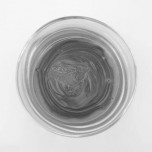SOFC Ink Vehicle
Create your own ceramic paste and inks using the Solid Oxide Fuel Cell (SOFC) Ink Vehicle. This terpineol based ink vehicle is excellent for creating ceramic pastes and inks and is used in our own fabrication processes. You can also adjust the viscosity of your current pastes and inks by gradually adding this ink vehicle until you get the right consistency for your application.
• Formulation: Terpineol Based
• This is a great ink for making electrical connections for electrochemical testing of fuel cells, ceramic substrates, electrochemical materials, and metals.
• Stirring the ink before use is highly recommended. For best results, the ink should be stirred with a spatula or a sonic wand to achieve an even consistency prior to use.
• This ink is typically fired at 750°C or 850°C for 1 hour to ensure adhesion prior to testing at the desired test temperature.
• This ink can be used for screen printing for generating electrical connections for wire attachments.
Ensuring a solid connection between your electrodes and current collector is critical for obtaining good test results. Leveraging our experience in electrochemical testing, testing we have we offer the following suggestions for obtaining optimum results with our silver paste product.
 |
Step 1:
Cut or punch out the metal mesh to the size/area that you want to test on your sample. |
 |
Step 2:
Cut the contact wire to the desired length, with a loop around the perimeter of the mesh with the wire extending past the sample. Place cut mesh in the center of your sample and the looped wire on top of wire mesh. |
 |
Step 3:
Apply the contact paste around the perimeter of the wire loop, apply a few drops across the mesh for best adhesion strength. |
 |
Step 4:
Cut and place a straight piece of wire next to the mesh on the sample. Again, cover with ink for adhesion. This will allow for 4 point conductivity testing and a lead for measuring voltage, while the other draws the current. |
|
|
Step 5:
Dry in a 100°C oven for an hour or until the ink looks dry. Repeat all steps on the opposite of the sample in the same area. |
|
Step 6:
Fire your sample to adhere your contact wires. Firing conditions: 1°C per minute to 800°C, hold for 1 hour, cool to room temperature sample in the same area. |
Write a review
Your Name:
Your Review: Note: HTML is not translated!
Rating: Bad Good
Enter the code in the box below:






 SOFC Tips For Adhering Ink
SOFC Tips For Adhering Ink










